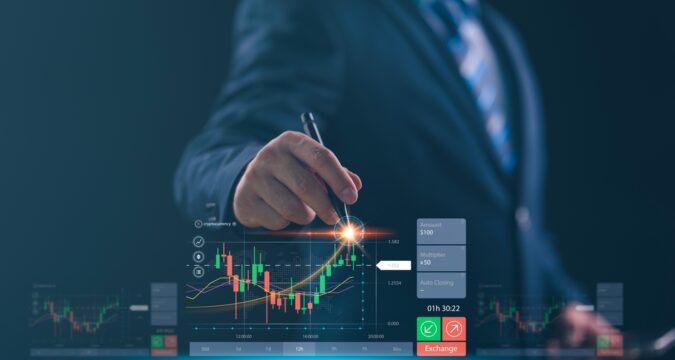
On Thursday, the US Dollar struggled to keep up with its competitors as the financial markets were swayed by risk flows.
The upcoming release of Eurostat’s preliminary Harmonized Consumer Price Index data for March, alongside the February Unemployment Rate, is highly anticipated.
Meanwhile, in the US, the Personal Consumption Expenditures Price Index – a crucial inflation metric favored by the Federal Reserve – is set to be revealed.
This report is especially significant, given that it’s the last day of the month and the first quarter, which could lead to an increase in position adjustments and heightened volatility in the markets.
As traders brace themselves for potential wild fluctuations, it’s essential to keep a close eye on these economic indicators.
A Look at What’s Going on in the Forex Landscape
Wall Street’s primary indices closed positively, bolstered by significant gains in the tech and real estate sectors. This followed a modest rebound on Wednesday.
However, the US Dollar Index remained under pressure and closed at its lowest level since early February, hovering slightly above 102.00. In early Friday trading, the DXY is attempting a minor recovery but is struggling to find bullish momentum.
Despite this, investors remain optimistic as they assess the market’s current landscape and weigh the potential risks and rewards of their investments.
Moving forward, it will be interesting to see how the DXY and other financial indicators perform in response to global events and economic data releases.
Thursday saw an announcement from the US Bureau of Economic Analysis, revealing a revision of the fourth quarter’s annualized Gross Domestic Product growth.
The previous estimate of 2.7% has now been adjusted to 2.6%, indicating a slightly weaker economic performance than previously thought.
In a separate report, analysts predict that the annual Core PCE inflation rate in the US will remain steady at 4.7% for February.
This high inflation rate has been a growing concern for economists and investors alike, and many are closely monitoring inflation indicators to anticipate any potential market changes.
As the global economy continues to navigate through ongoing challenges, it will be crucial to keep a close eye on economic data releases and their impact on financial markets.
How is the U.S. Dollar Holding up Against Other Currencies?
During the American session on Thursday, the EUR/USD currency pair managed to rise above the 1.0900 level before entering a consolidation phase in the Asian session on Friday.
Economic data released from Germany earlier showed a decline in Retail Sales by 1.3% on a monthly basis in February.
This figure was much worse than market expectations, which had predicted a 0.5% increase. However, market participants largely disregarded this news.
In a separate report, France’s Annual HICP for March declined to 6.6% which was slightly higher than market expectations of 6.5%.
While this news had a minor impact on the market, it’s worth noting that inflation rates in the Eurozone remain a point of concern for investors and could have potential impacts on the EUR/USD exchange rate.
Meanwhile, after a modest pullback on Wednesday, the USD/JPY currency pair regained its traction and climbed above 133.00 on Friday.
These economic indicators are closely monitored by market participants as they assess the potential impacts on the Japanese yen’s strength against other currencies, particularly the US dollar.
The price of gold managed to make a decisive recovery on Thursday, after which it continued climbing higher early on Friday.
Meanwhile, Bitcoin ended up reversing its previous gains after climbing over $29,000. The currency closed in negative territory on Thursday.
As of the latest update, BTC/USD has experienced a sideways movement close to $27,000. In contrast, Ethereum faced difficulties in finding a stable direction recently, extending its sideways grind around $1,800 to begin the week’s final day.
Final Thoughts
All of these trends are being closely watched by investors who are trying to gauge market sentiment and assess potential risks and opportunities. It will be interesting to see how these assets perform in response to global events and economic indicators.


